Basic Information
Observation Details
Observation Date:
January 4, 2021Submitted:
January 4, 2021Observer:
TAC - Andy BondZone or Region:
Taos AreaLocation:
Lake Fork PeakSigns of Unstable Snow
Recent Avalanches?
None ObservedCracking?
None ExperiencedCollapsing?
None ExperiencedSnow Stability
Stability Rating:
GoodConfidence in Rating:
HighStability Trend:
SteadyBottom Line
A poor snowpack structure continues to exist near and above treeline on NW through SE aspects. Triggering an avalanche will be stubborn and may take hitting the "sweet spot" or being the unlucky person at the right place right time. Immediate avalanche results may not be obvious but hopefully, this community somewhat understands that after the incident a couple of years ago. It might not be the first or 5th person on the slope to an avalanche. It's hard to ignore a recent avalanche cycle and continued poor snowpack structure that continues to yield easy to moderate results in long column tests. Low likelihood but consequences continue to remain high!
Media
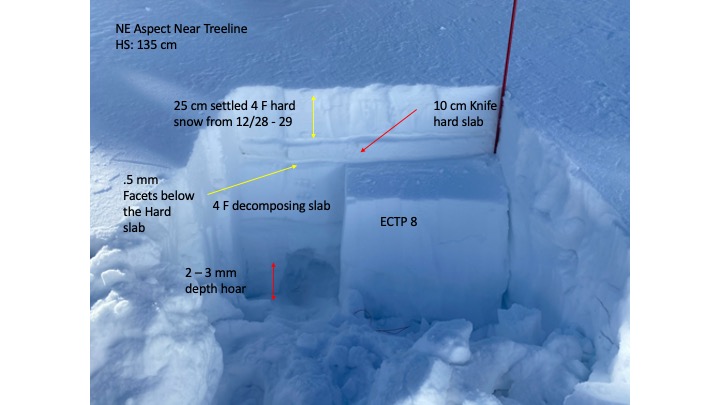
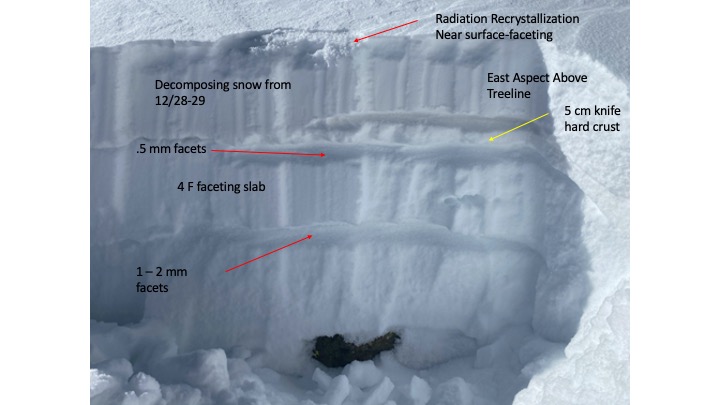
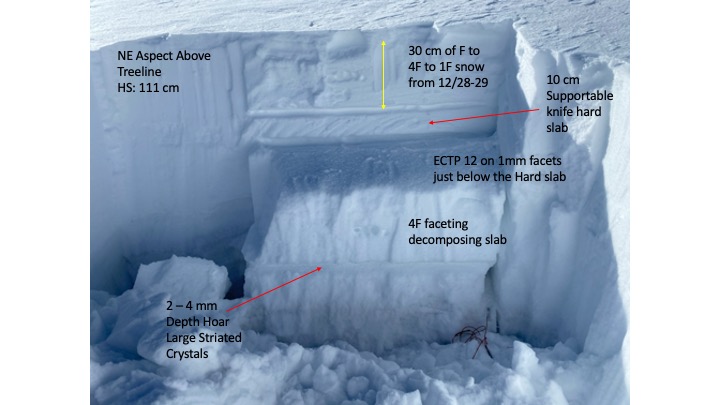
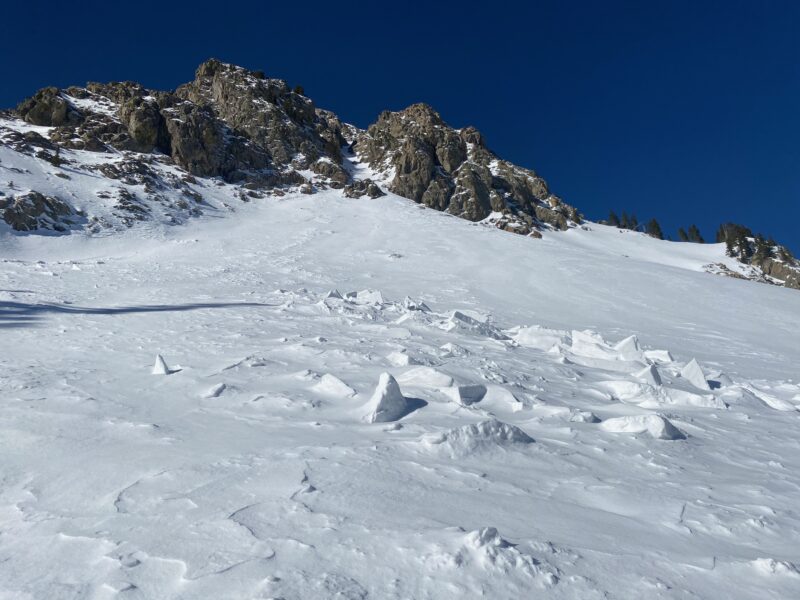
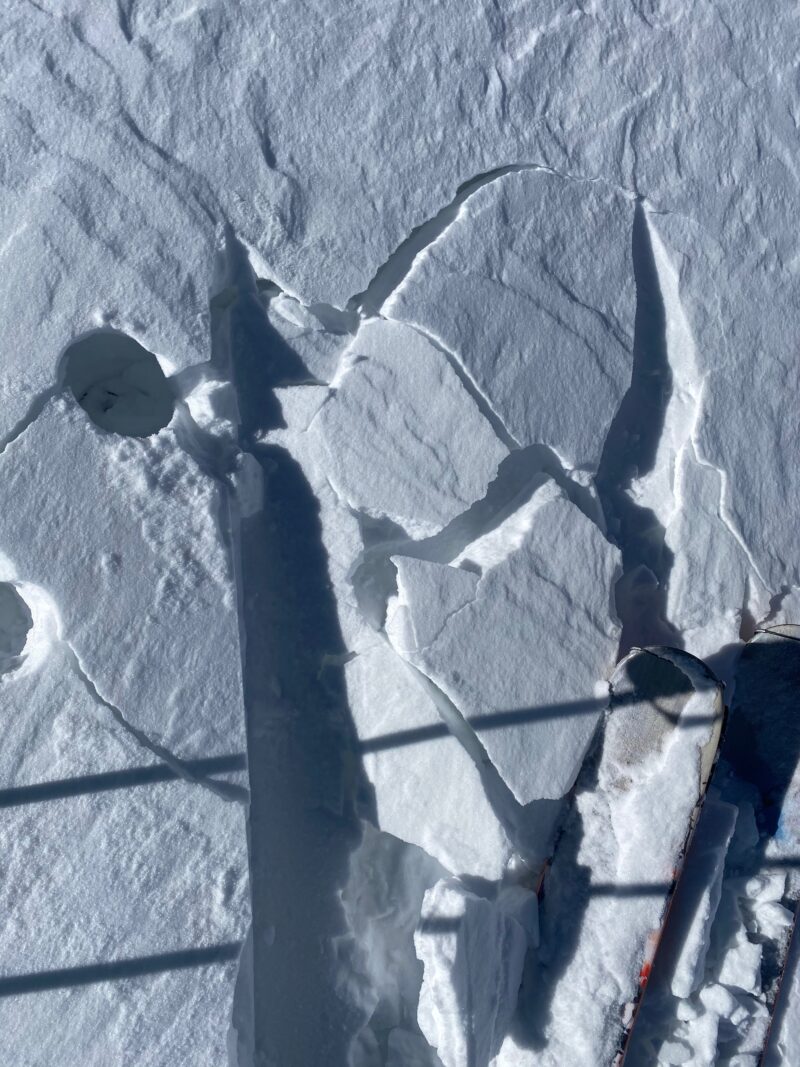
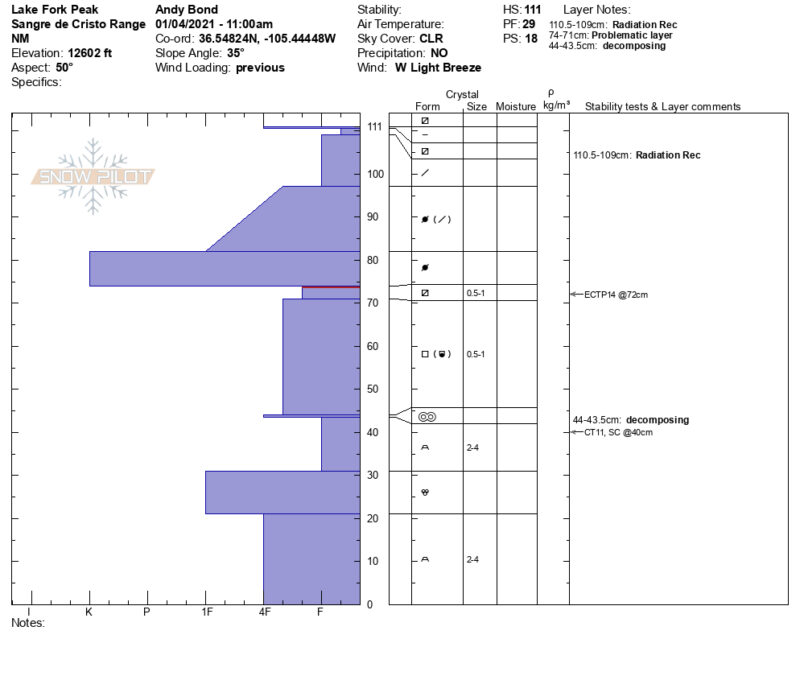
Advanced Information
Weather Summary
Cloud Cover:
ClearTemperature:
23 - 32Wind:
Light , WA spring-like day, with lots of sun and warm temperatures that made it just to 32 F at 10,000'. Winds were light and did not observe any snow transporting.
Snowpack Observations
Made it up to Lake Fork Peak today. Definitely the warmest day of the last week, with solar aspects and slopes below 10,000' taking heat. Melt-freeze and sun crusts have formed at lower elevations and especially south aspects. Did notice some good Radiation Recrystallization on easterly aspects above treeline.
Below treeline I struggle to find any slabs able to propagate. South aspects are melting back to bare ground and north and shady aspects are mostly faceted cohesionless snow.
Near and above treeline is where I'm finding stiff slabs that formed just prior to Christmas with the latest round of storm snow above. Recent winds have changed the snow surface to breakable and supportable crusts as well as soft windblown snow. It's highly variable skiing to say the least but you can still piece together soft turns if you know what to look for.
The snowpack structure continues to yield easy to moderate results in long column test although I did not experience any collapsing and cracking today. The key slab communicator seems to be a supportable knife hard slab that formed prior to Christmas and before this last storm at the end of December. There are also 2 faceted weak layers of concern that continue to pop up in snowpits. One facet layer is just below the hard slab. This seems to be the easiest to get to propagate in extended column tests, but may also just be the easiest to trigger while tapping. On some slopes, depth is on the ground but in pits today large striated depth was roughly 30 cm off the ground that is also a concern in our shallow less than 1.5m snowpack.
In looking at naturals that ran on 12/29 it's obvious that avalanches quickly stepped down into deeper weak layers as we have a very weak snowpack beneath the hard slabs that can't support the rapid load.
Avalanche Problems
| Problem | Location | Distribution | Sensitivity | Size | Comments |
|---|---|---|---|---|---|
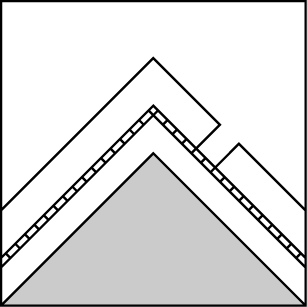 Persistent Slab
Persistent Slab
|
|
A poor snowpack structure continues to exist near and above treeline on Northerly through E aspects. It's stubborn to get a slope to release right now but we are less than a week out from the last loading event that we saw a widespread natural avalanche cycle. |
Terrain Use
Stepped out into avalanche terrain above treeline to see what was going on slopes that did not natural avalanche during last week's cycle.
Close